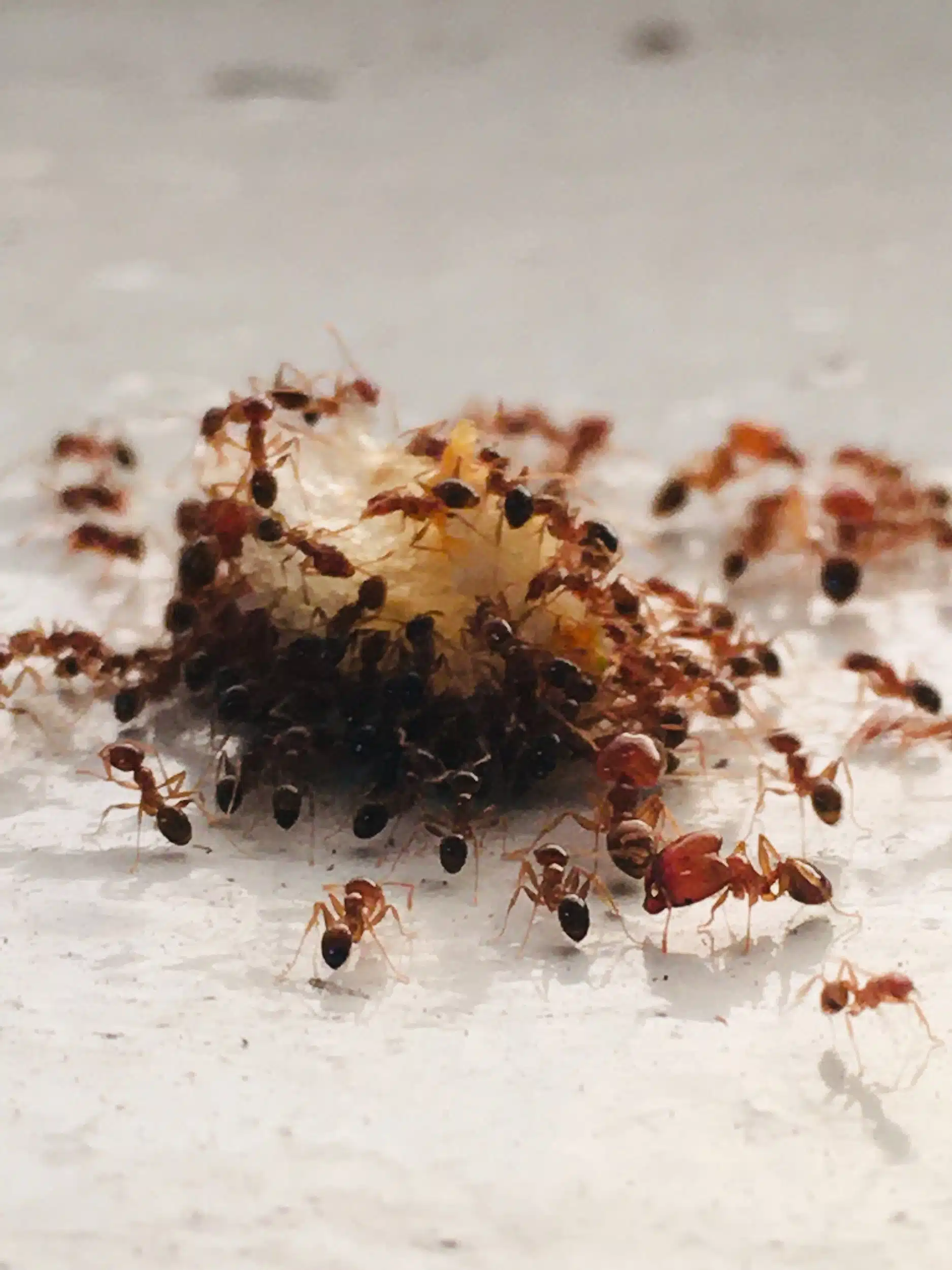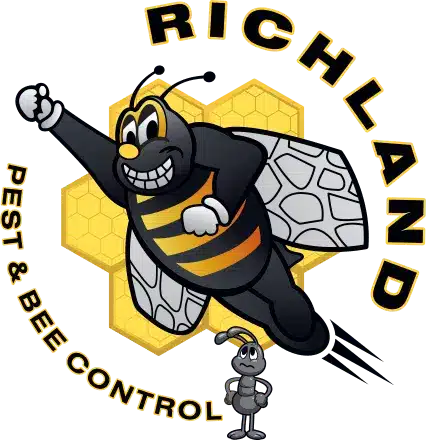Table of Contents
ToggleUnderstanding how long ants live and the factors influencing their lifespan can provide critical insights for effective pest control strategies.
Ants are some of the most commonly encountered pests in houses, commercial, and industrial spaces.
Put a small pile of sugar or anything sweet anywhere in your house, and hundreds of ants will storm it in just a few minutes!
While these little creatures are extremely important for the normal functioning of our ecosystem, their presence in living places can bring unsanitary conditions and cause health hazards.
This is why ants are considered pests! And learning about their life cycle and average lifespan can help us control them better.
Knowing the ant life cycle helps pest control experts determine the best time to intervene and disrupt colony growth effectively.
You might think that the lifespan of a common ant only has a few days to maybe a couple of weeks, but interestingly, ants can live up to 40 years!
What’s even more interesting is that the length of an ant’s life space can depend on its caste, role in the ant colony, gender, and species.
Where most of us only know about house ants, red fire ants, or carpenter ants, astonishingly, there are over thirteen thousand ant species in the world, and all of them have different average lifespans!
In this blog post, we are going to discuss the lifespan of some common ant species. We are also going to discuss the different stages in the life of an ant. So how long do ants live? Let’s dive deeper into the fascinating world of ants and their survival secrets.

Before we discuss ant characteristics like how long different ant castes and species typically live, we must first understand an ant’s life cycle. Different stages in the ant life cycle play a major role in determining the caste or role of an ant in the colony.
This role then determines how long the ant will live. The ant’s life cycle is usually divided into four stages. These stages are egg, larva, pupa, and adulthood. Many developmental changes occur during these stages, which result in the ant developing a particular form or caste. Let’s look into these stages in detail.
Like many other insects, ants start off their lifecycle in the form of eggs. The ant queen lays these eggs. Once the eggs are laid, the queen fertilizes some particular selected ones. This gives the fertilized eggs special genetic combinations, which causes them to develop particular forms or castes.
Fertilized eggs can develop into queens, soldiers, alates, or female worker ants. At the same time, unfertilized eggs develop into drones. All these different ant castes have different roles in the colony and different life spans. Interestingly, the queen chooses to fertilize ant eggs based on the colony’s needs.
Ant eggs typically hatch within a few weeks, depending on the ant species. Once the egg hatches, the ant moves to the next stage, which is the larva stage. An ant in this stage is in the form of a short grub; it is immobile and completely dependent on the worker or caretaker females for nutrition, protection, and mobility.
The larva stage is when the selection process occurs. The ant larvae are given different levels of nutrition by the worker ants, which plays a significant role in determining which caste a larva will develop.
Alates, workers, and soldier ant larvae are given more nutrition as compared to unfertilized drones. There is a specific ratio of ants of different castes set in a colony, and this ratio is maintained during the larva stage.
After the larva, comes the pupa stage. In the pupa stage, the young ants have developed their mature form but are still mostly immobile. Ants in the pupa stage are still dependent on the worker ants but appear as fully mature adult ants.
Examining their size and color is a typical technique to distinguish between pupae and adults. Ants in the pupa stage are generally smaller and of a much lighter color as compared to adults.
Ants typically stay in their pupa stage for 1 to 4 weeks, depending, again, on the ant species. Once fully mature, they emerge onto the adult stage.
When an ant reaches its adult stage, it is ready to take on its role in the colony. Adult ants have a sturdy and tough exoskeleton. They are mostly dark in color, but this can depend on the species.
Unfertilized male ants only play one role which is to mate with the queen. The soldier ants protect the colony against external threats. Alates are virgin queens that will mate with the males and fly off to start their own colonies.
Workers have the largest population compared to other castes and are involved in taking care of the whole colony. Close to ninety-five percent of all ants in a colony are worker ants.
Ant lifespan varies dramatically depending on biological and environmental factors. Let’s explore the main influences:
The gender of an ant has a primary role in determining the ant’s lifespan. An ant’s gender is determined by whether or not it was fertilized during the egg stage and the level of nutrition it receives in the larva stage.
Males, such as drones, usually live for around a week. Whereas females such as the queen, workers, and alates can even live for years!
An ant’s role in the colony or its caste is a major factor that determines how long it will live. Let’s discuss the common ant castes and their average lifespans.
Workers are the most common ants in the ant colony, and as discussed earlier, they are involved in taking care of the whole colony. Depending on the ant species, workers typically live for a few months to even years. Workers of Black Garden Ants have the longest lifespan as they can live as long as 4 years!
Drones are unfertilized males whose only purpose is to mate with the queen. Drone ants only live for around a week, or at most a couple of weeks, under ideal lab set conditions.
Soldier ants protect the colony from external threats such as intruders and have a short life expectancy. These ants don’t live very long and are mostly killed while defending their colony.
Alates are female virgin queens who will mate with the males and fly off to start their own ant colonies. Since these ants are future queens, they live very long, even years!
Queen ants are the most valued ants in the colony as they lay eggs. A queen has the longest ant lifespan and can usually live for decades! For example, A carpenter ant queen can live over 10 years in natural circumstances!
The ant’s life is majorly determined by its species. Some species live longer as compared to others. For example, workers of Pharaoh Ants typically live for just 70 days, whereas Carpenter workers can live as long as 7 years!
Species variation is a crucial factor pest controllers study when planning long-term pest control solutions against ant infestations.
The quality and abundance of food have a major influence on how long ants will live. If food is in abundance and of high quality, the ants will live comparatively longer where there is scarce or poor-quality food.
Ants usually live much longer in lab settings as compared to natural settings because there are no external threats to the colony (such as intruders). In addition to that, there is no competition and an abundance of good quality food which increases their survival chances.
Property Pest control challenges are greater in outdoor, natural environments where colonies adapt and thrive under harsh conditions.
Competition can also influence how long ants will live. Where there are other colonies or insects around, there will be competition for resources as well as more threats. This can lessen the ants’ survival chances.
Ants can live for around a week to even years and decades, depending upon their species, gender, and role in the colony or caste. In addition to that, various external factors, such as threats from other insects, competition, availability of food, and environmental settings, can influence how long the ants will live. Knowing how long ants live can aid us in multiple ways in pest control.
By understanding the complex factors that influence ant lifespan, pest control professionals can develop targeted strategies to eliminate colonies effectively and sustainably.

Richland Pest & Bee Control is a family-owned pest management company serving Connecticut and Western Massachusetts for over 40 years. Known for their expertise and 5-star customer service, they offer reliable solutions for stinging insects, rodents, and other pests, ensuring homes and businesses stay pest-free.